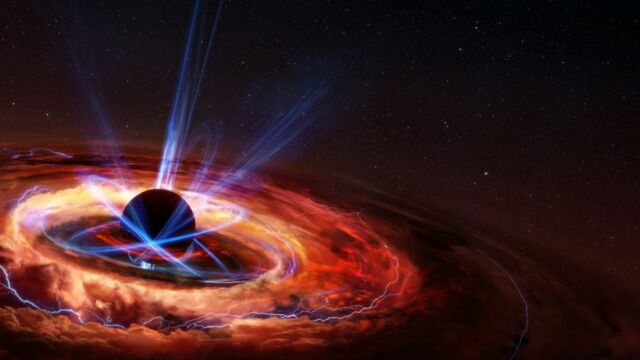Black holes in the cosmos are larger than astrophysicists predicted. According to a recent research, every single black hole in the cosmos may be developing, as the ever-growing universe expands.
Discover our latest podcast
Black hole mergers
Two spiralling black holes combine in a matter of seconds.As they are massive—their mass is roughly 40 times lesser than the mass of sun—they tend to keep growing.
Many of these black hole mergers have been observed by scientists at the Laser Interferometer Gravitational-Wave Observatory (LIGO) and the Virgo interferometer since 2015.
The new theory, termed ‘cosmological coupling,’ explores the idea, that as the cosmos expands outward post the Big Bang, so do all objects with mass.
The gravitational ripples in the space-time continuum that occur when two huge black holes become locked in orbit, spiral inward, and collide, are the basis for this theory.
Author Kevin S. Croker, a professor in the University of Hawaii at Mānoa Department of Physics and Astronomy, told Live Science:
For the types of black hole we have hypothesized, the coupling can be a million times larger than what you'd expect from the core of the sun. And even for these sorts of black holes, you might have to wait hundreds of millions of years to just double your mass.
Croker added:
For the types of black hole we have hypothesized, the coupling can be a million times larger than what you'd expect from the core of the sun. And even for these sorts of black holes, you might have to wait hundreds of millions of years to just double your mass.
Supernovas
Black holes expand by consuming gas, dust, stars, and even other black holes over time. However, because black holes are frequently formed as a result of massive star explosions known as supernovas, many black holes develop in areas of space devoid of this material.
The researchers opted to represent two merging black holes in a developing universe, rather than the static universes used by other research groups to simplify the complicated equations (derived from Einstein's theory of general relativity) that form the basis for black hole merger models.
Croker said in the statement that:
It's an assumption that simplifies Einstein's equations, because a universe that doesn't grow has much less to keep track of. There is a trade-off, though: Predictions may only be reasonable for a limited amount of time.
The hypothesis cannot be stated for certain; as there still exists blind spots for the scientists, such as uncovering all the phases of the star being born. The universe still has a galore of secrets waiting to be uncovered.















